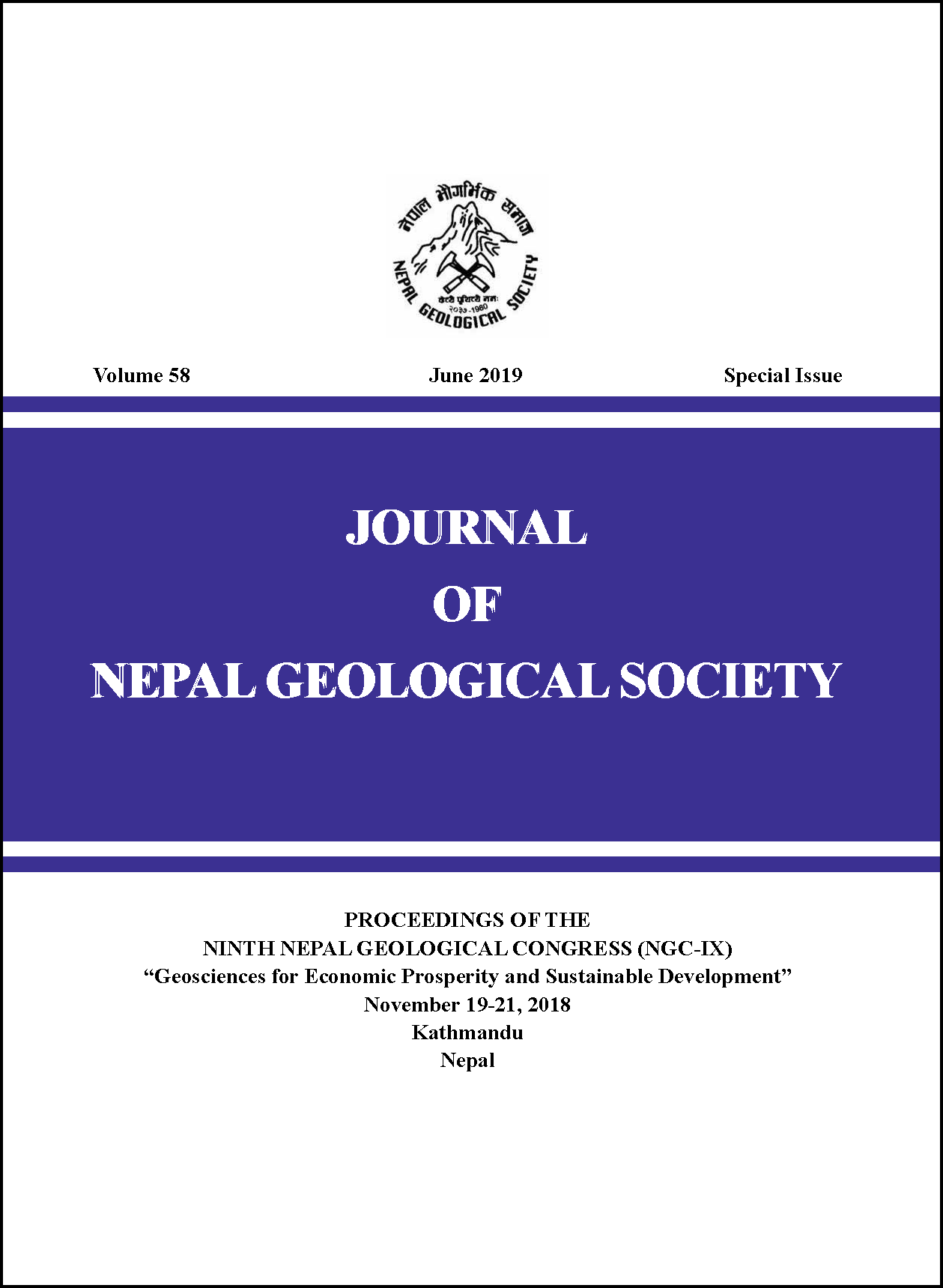Hydrogeochemical analysis of part of the alluvial aquifer, Rupendehi District, Nepal
DOI:
https://doi.org/10.3126/jngs.v58i0.24602Keywords:
Groundwater, Aquifer, Hydrochemical Analysis, Water QualityAbstract
This study is mainly focused on detail hydrogeochemical study and water quality test of inorganic constitutes for drinking and irrigation purposes. The study area occupies part of the Siwalik and the Terai with total area of 331 sq. km. Total 30 samples were analysed at applied geology and hydrogeology laboratory, Ghent University, Belgium. The major cations (Na+, Ca2+, Mg2+, K+, Fe2+, Mn2+, Al3+ and NH4+), anions (Cl-, SO42-, NO3-, NO2-, HCO3-, CO32-, PO43-, and OH-) and trace elements (F- and Br-) were measured. Results were treated using Piper diagram, Scatter diagram and Stuyfzand (1986) classification of groundwater. It showed that groundwater of the study area was slightly acidic to basic in nature. Ca2+ and Mg2+ and HCO3- were major cations and anion for all samples. The sources of these ions in the water were from dissolution of calcite (CaCO3) and dolomite CaMg (CO3)2. The amount of Na+ and K+ was from hydrolysis reaction of silicate minerals such as K-feldspar and Na-feldspar. Small concentration of SO4-2 was from oxidation of pyrite. Most of the samples (27 out of 30) were fresh, moderately hard, CaHCO3 water type with surplus of (Na++K++Mg2+). Water of the study area was found suitable both for drinking and irrigation purposes in accordance with WHO (2004) and National Drinking Water Quality Standards (2005).
Downloads
Downloads
Published
How to Cite
Issue
Section
License
© Nepal Geological Society




